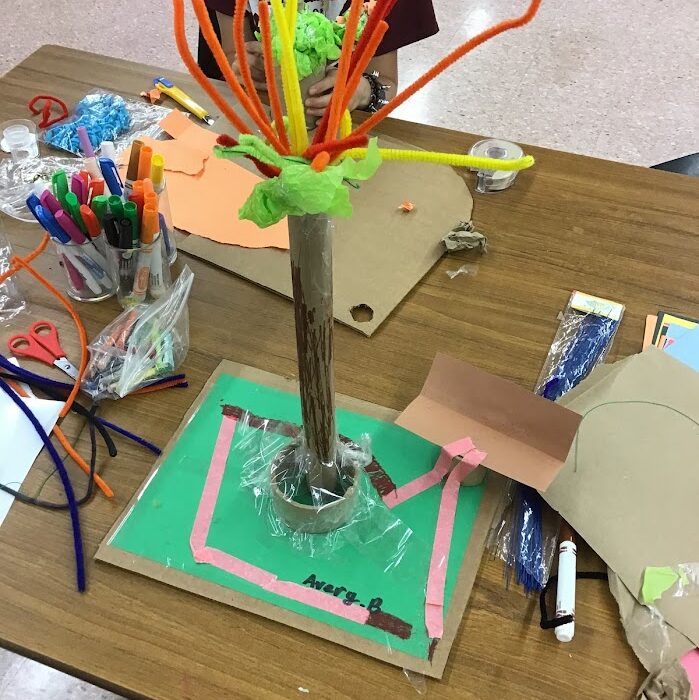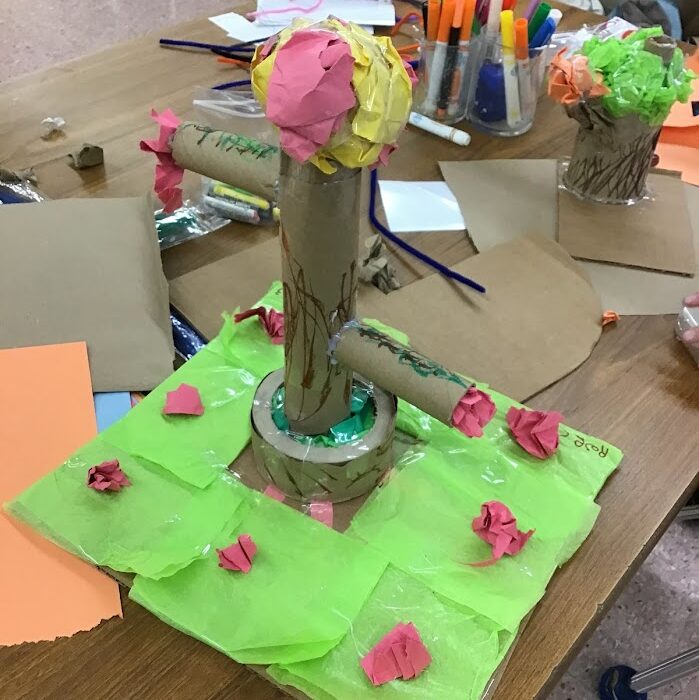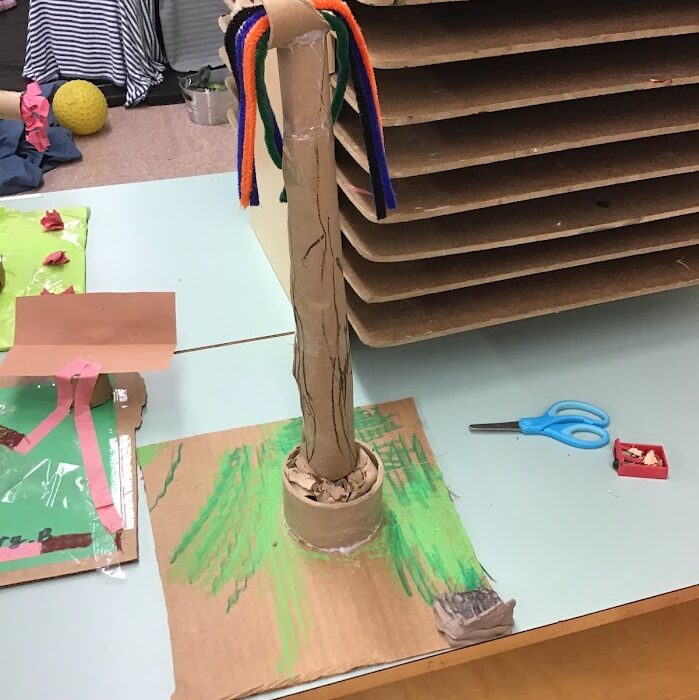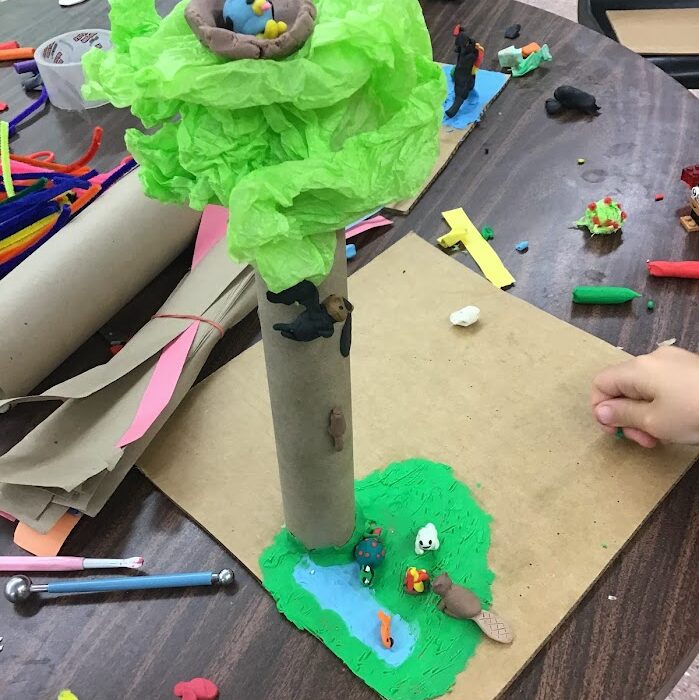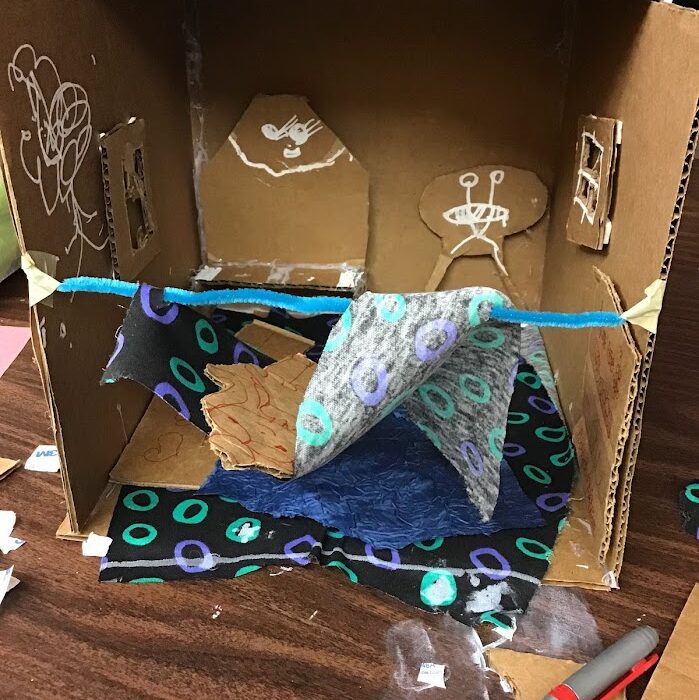Artasia at St. Vincent de Paul
Hamilton Wentworth Catholic Child Care Centres
🖌️ Artist Educator: Kayla Bowland
My Hand is Moving by Itself
At St. Vincent de Paul, there was a child named Leah who initially lacked enthusiasm for art. In the first week, she didn’t participate, and her effort in the second week was minimal. However, as we reached the third week of our program, Leah became more comfortable with both us and the artistic approach we brought.
Leah’s reluctance toward art stemmed from her tendency to feel unsatisfied with the finished product—a sentiment familiar to artists of all ages. This feeling can be disheartening, but Leah’s approach took an interesting turn during the third week. She began creating artworks, only to promptly discard them and start anew. Surprisingly, this wasn’t driven by frustration; it seemed more like a playful act. While I was initially puzzled, I was mostly glad to see her engaged in art, even if she didn’t intend to keep any of her creations.
When I inquired about her continued art-making despite the disposals, Leah responded with an intriguing statement: “I don’t know. My hand is just moving by itself.”
This notion warrants reflection. As Artist Educators, we often contemplate the balance between the creative process and the final product. We question what to emphasize when introducing the arts to children. Often, children find their own answers to these questions, and our role is to help strike a balance.
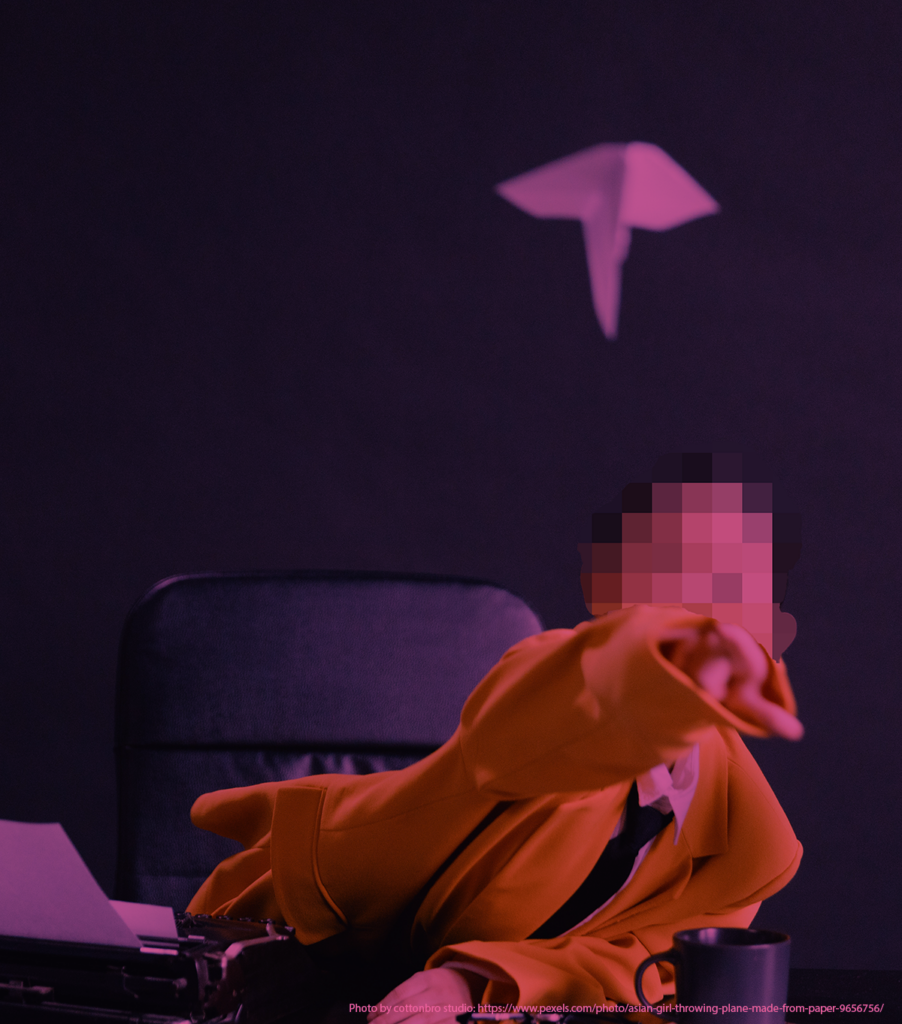
Leah’s case is fascinating because she fully embraced the creative process and willingly discarded her creations. The question arises: is this a negative approach? In art, doing is learning. Leah spent time creating and learning, even though she ended up with nothing tangible to show for it. Yet, I would argue that the time spent is proof enough. Not having physical art to display doesn’t mean she didn’t create. To some extent, Leah’s process reminds me of a sand mandala—a beautiful creation meticulously crafted by Tibetan Buddhist monks and then swept away when completed. It’s a reminder that art, like life, is impermanent. Becoming too attached to the final product may cause us to overlook the profound value of the creative process—the unique and remarkable experience of bringing something to life.
This also highlights why it’s crucial to offer creative opportunities to a diverse range of children. While those who already engage in art may enjoy our program, it’s perhaps even more crucial to bring the artistic experience to children who believe they cannot do it. Throughout the program, Leah insisted that she wasn’t an artist. However, by simply engaging in art, by trying, she became an artist in my eyes. I firmly believe that every child, adult, and person possesses creative potential. Whether we label ourselves as artists or not often depends on whether we’ve exercised those creative muscles. Artasia is a valuable program because it provides opportunities for children at all stages of their artistic journey to stretch and exercise those creative muscles, whether they are beginners or experienced. It’s particularly valuable for children like Leah who may not believe in their own creativity. It’s essential to understand that it’s not that these kids lack creativity—it’s that they believe they do. Our role is to invite them into a safe, welcoming, and supportive space and challenge that belief.
St. Vincent de Paul Gallery

A Perfect Park
When we brought our materials to build a Forest in the second week of programming, a child named Logan at St. Vincent de Paul ended up building something of a utopia. He built a park full of animals, complete with trees and water and everything a good habitat needs. Most importantly, there were no predators in this park, no danger posed to the many prey animals that lived there. Logan took a lot of joy in thinking of new animals to add to the park, but was always careful to ensure that it wouldn’t present a threat to the ones already living there.
Of course such an idyllic state of nature is impossible. Having a world with only prey and no predators would throw off the natural balance and quickly collapse. But that kind of realism and cynicism is unnecessary and irrelevant when it comes to making art. In fact, I think it’s important to provide these kinds of opportunities not only to dream of a different world, but provide the means and materials to make it. Although this kind of park could not exist in our world, it did exist in its own world and in its own right. There is value in practicing imagination, even if the things imagined may not be possible to replicate in reality.
They say a picture is worth a thousand words. Scroll through this gallery to witness the diverse artworks children created.
Can you hear the stories behind each of them?
